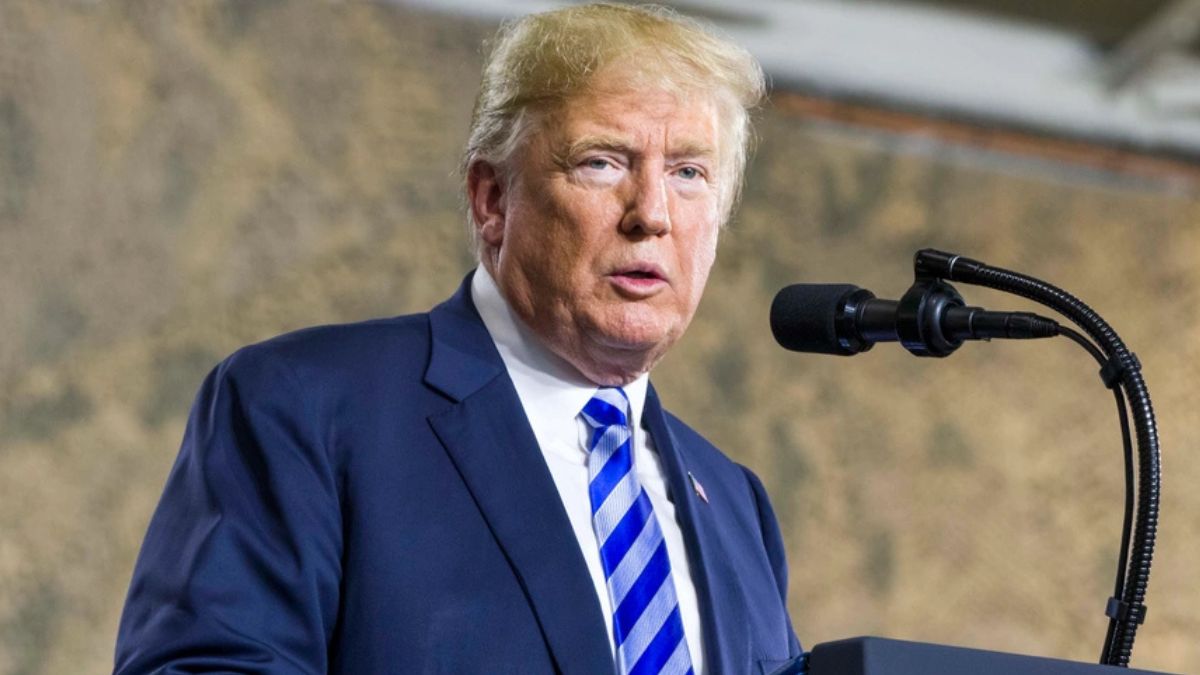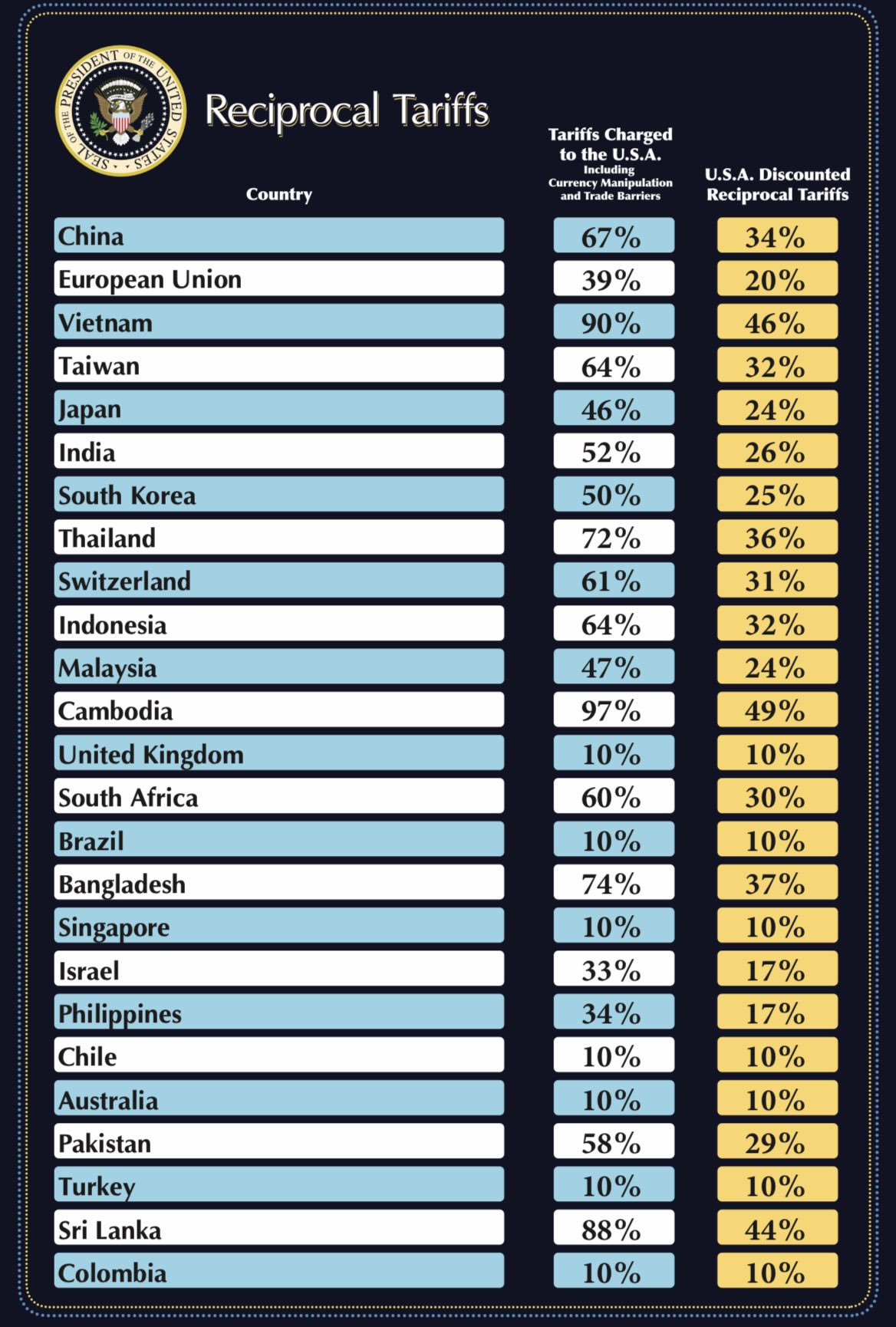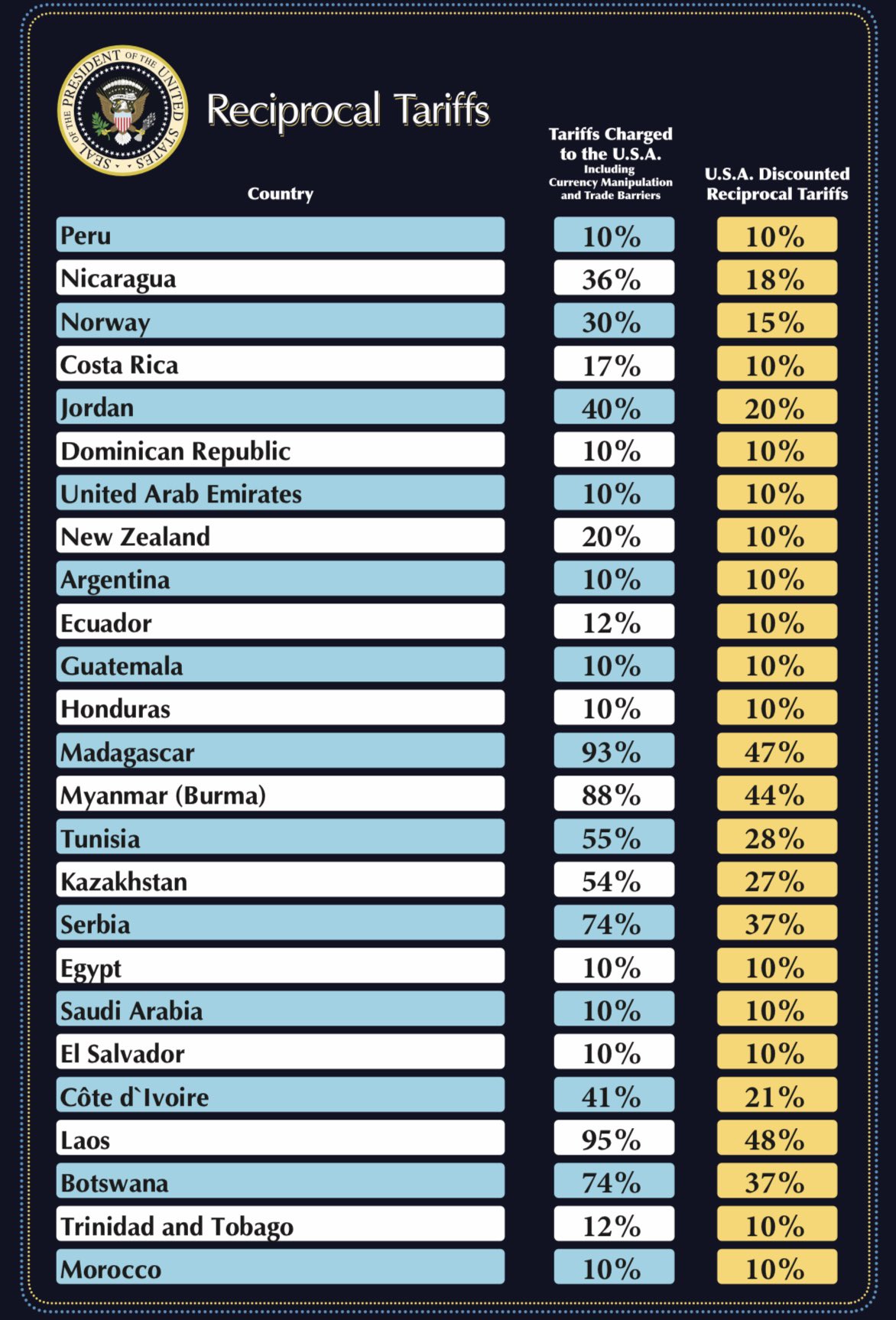
President Donald Trump made headlines once again by announcing sweeping reciprocal tariffs against dozens of U.S. trading partners. Speaking from the Rose Garden of the White House on April 2, Trump declared what he called the nation’s “Liberation Day”, drawing sharp attention from global markets and setting Google Search trends ablaze.
“For years, hardworking American citizens were forced to stand on the sidelines while other nations grew rich and powerful—largely at our expense. But now, it’s our turn to thrive,” said Trump during a major policy address.
With his statement came a striking visual aid that quickly went viral: a detailed reciprocal tariffs chart, comparing tariffs imposed on the United States with the much lower rates imposed by the U.S. on its trade partners. The table has become a lightning rod in political and economic discussions, stirring debate across industries and among foreign policy experts.
What are reciprocal tariffs and how do they work?
Reciprocal tariffs refer to trade measures in which countries impose similar or equal tariff rates on each other’s imports. Trump’s plan, according to his statement, seeks to match or counterbalance the tariffs that other countries place on American products.
“I will sign a historic executive order instituting reciprocal tariffs on countries across the globe,” Trump declared. The move, he argued, is a corrective measure against what he sees as decades of trade imbalances and currency manipulation by foreign nations.
ALSO READ. How do Donald Trump’s tariffs affect cars?
Which countries are most affected by Trump’s tariffs?
The chart presented by Trump showcased stark disparities in trade tariffs, highlighting what his administration views as systemic unfairness. Among the countries listed, some of the most extreme discrepancies include:
- Vietnam: Charges the U.S. 90%, while the U.S. only applies a 46% reciprocal rate.
- Cambodia: 97% to the U.S. vs. 49% reciprocated.
- Laos: 95% to the U.S., met with 48% from the U.S.
- Sri Lanka: 88% to the U.S., 44% reciprocated.
- Madagascar: 93% vs. 47%.
- China: 67% vs. 34%.
- India: 52% vs. 26%.
- Thailand: 72% vs. 36%.
In contrast, traditional allies and free-trade partners such as Australia, Chile, the United Kingdom, and Canada (not shown) appear to maintain more balanced tariff arrangements, often reflecting 10% tariffs or less on both sides.


What is the rationale behind Trump’s economic liberation day?
Trump did not mince words when he introduced the policy as a turning point in American history. “This is one of the most important days, in my opinion, in the history of the United States. It is our declaration of economic independence,” he stated, framing the new tariff initiative as a “Liberation Day” from economic dependence on foreign manufacturing and imports.
This positioning echoes Trump’s long-standing rhetoric that the U.S. has been exploited through unfavorable trade deals, particularly with nations that manipulate their currencies or set non-tariff trade barriers such as quotas, inspections, or subsidies.
Could this spark a global trade war?
Experts warn that such a sweeping reciprocal tariff strategy may trigger retaliatory tariffs and escalate trade tensions globally. Similar policies in Trump’s first term led to tit-for-tat actions, especially with China. If re-elected and able to enforce the policy, countries affected by higher reciprocal tariffs may impose countermeasures, potentially leading to a new wave of global trade instability.









